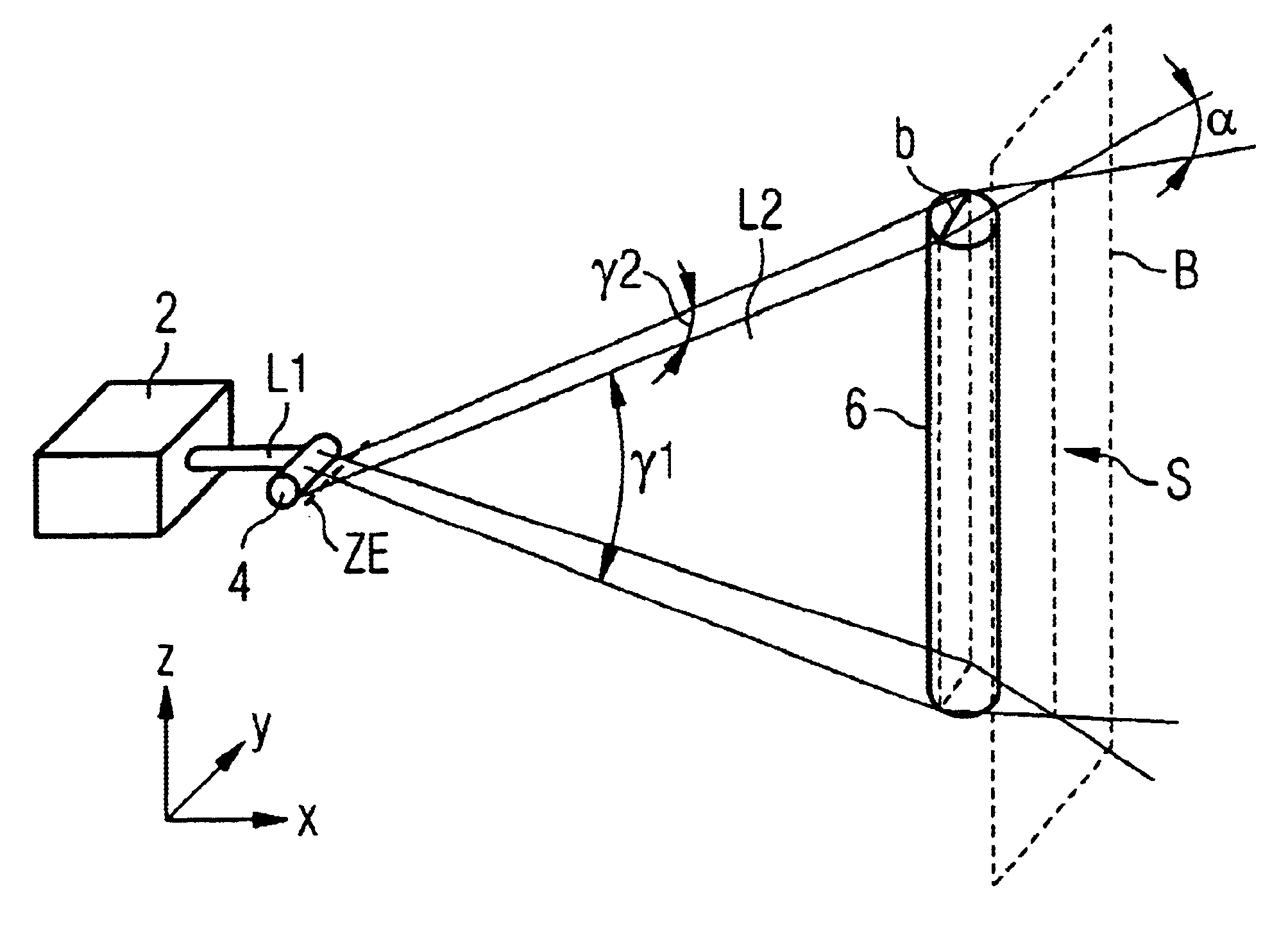Laser illuminating apparatus for illuminating a strip-shaped or linear area
a technology of linear area and illuminating apparatus, which is applied in the direction of lasers, instruments, optical resonator shape and construction, etc., can solve the problems of unfavorable light emitted by light-emitting diodes, assembly is not suitable for illuminating linear or strip-shaped areas, and large loss of light, so as to achieve high output power and high radiant power , the effect of personal eye protection
- Summary
- Abstract
- Description
- Claims
- Application Information
AI Technical Summary
Benefits of technology
Problems solved by technology
Method used
Image
Examples
Embodiment Construction
FIG. 1 shows a part of a test apparatus for spectroscopic examination of bank notes, this apparatus serving only as an example of numerous other apparatuses in which the inventive laser illuminating apparatus can be used.
Laser light source 2 formed here for example as a diode laser emits collimated laser beam L1 onto grid rod lens 4 oriented with its longitudinal axis in the Y direction of a Cartesian coordinate system. From collimated laser beam bundle 1 grid rod lens 4 produces laser light beam fan L2 that has its origin in intermediate image plane ZE and is characterized by two divergence angles, namely first divergence angle γ1 in the Z direction and divergence angle γ2 orthogonal thereto in the Y direction.
Laser light beam fan L2 hits rod lens 6 whose longitudinal axis is oriented orthogonally to the longitudinal axis of rod lens 4. As indicated above in FIG. 1, the dimensions of rod lens 6 are coordinated with the cross section of laser light beam fan L2 such that width b of l...
PUM
 Login to View More
Login to View More Abstract
Description
Claims
Application Information
 Login to View More
Login to View More - R&D
- Intellectual Property
- Life Sciences
- Materials
- Tech Scout
- Unparalleled Data Quality
- Higher Quality Content
- 60% Fewer Hallucinations
Browse by: Latest US Patents, China's latest patents, Technical Efficacy Thesaurus, Application Domain, Technology Topic, Popular Technical Reports.
© 2025 PatSnap. All rights reserved.Legal|Privacy policy|Modern Slavery Act Transparency Statement|Sitemap|About US| Contact US: help@patsnap.com


